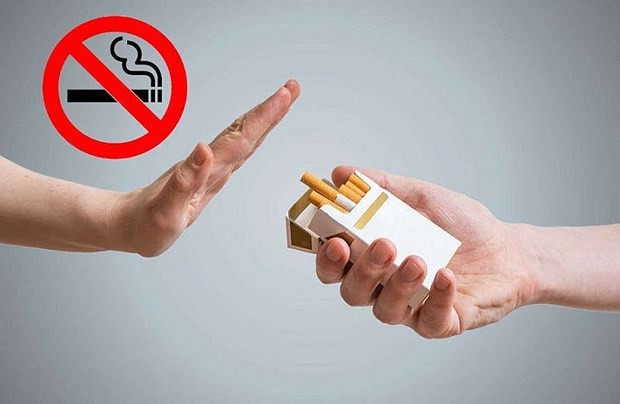 |
Illustrative image (Photo: VNA) |
The figure among women aged from 15 is expected to decrease to below 1.4%.
The strategy also aims to reduce the rate of passive smoking at work to less than 30%, at restaurants to less than 75%, at bars and cafes to below 80%, and at hotels to below 60%. The figures are hoped to drop to below 25%, 65%, 70% and 50%, respectively, in the 2026-2030 period.
It also sets out tasks and solutions for the implementation, including perfecting mechanisms, policies and laws on the prevention and control of tobacco harms, strengthening the leadership of Party committees and authorities at all levels and interdisciplinary coordination related to this issue, stepping up education and dissemination, intensifying inspection, examination and handling of violations, promoting scientific research and perfecting the surveillance system on tobacco harm prevention and control.
Efforts will be made to build a roadmap to increase taxes on tobacco products to ensure that by 2030 the tax rate will reach the proportion of the retail price as recommended by the World Health Organisation; and regulate the minimum selling price of tobacco products; research and evaluate the effectiveness of the plan for calculating taxes on tobacco products on the retail price in order to achieve the goal of reducing the rate of tobacco use.
The strategy also proposes promulgate regulations on the prevention of e-cigarette products, heated tobacco, shisha and other new tobacco products in the community; and the sale of tobacco for juveniles or juveniles’ selling tobacco under the WHO Framework Convention on Tobacco Control.
Over the past years, Vietnam has recorded encouraging results in tobacco harm prevention and control. The male smoking rate has fallen to 42.3% from 45.3% in 2015.
However, Vietnam is still one of the 15 countries with the highest smoking rates among male adults, heard a press conference on May 23.
























